William Nowik interview about Pan Symphony in E Minor and beyond
Guitarist William Nowik recorded this obscure instrumental record back in 1974. Psychedelic, progressive, very early Floyd sounding at times, Crimson-esque, and a kind of sound that reminds on the British early 70’s underground but with an experimental, trippy touch.
Where and when did you grow up? Was music a big part of your family life?
It was wartime. Half sick with chills and fevers, witch locked into Hieronymus Bosch/Salvador Dali land, there wasn’t any way I could make it to school that day. My 14-year-old body was engulfed in flames, ignited from both illness and meeting Son House at a gig a few nights before. My skiffle/folk/basement/attic/garage band, The Bridger Wells Trio, had split the bill with him at The Blue Heron café in the Western New York delta. We met in the green room before we went on stage. There he was, Son House, drinking whiskey straight from the bottle, holding a holy grail National resophonic. I sat on the floor in front of the master, as all good disciples do. Son House passed his bottle to me and played “Death Letter”, “Preachin Blues” and, “A cappella”, “John The Revelator”. I was baptized, born again, mesmerized, hypnotized, transfixed, and transmogrified. Although Son House was the headliner, he went on first as he said he had somewhere else to go. As he went on stage to play his set, an older cat came in and lit up a number. He told it was from the same batch of pot Bob Dylan had turned The Beatles onto. The other two guys in my band declined this cat’s offer to smoke, but I didn’t hesitate. I had just met Son House, drank whiskey from his bottle, witnessed him play right in front of me, and had smoked my first real joint. I was just a kid.
“I had just met Son House, drank whiskey from his bottle, witnessed him play right in front of me, and had smoked my first real joint.”
Son House finished working his mojo on the audience and my band headed to the stage. As we passed each other, he said to me, “Play it like you’re in church, boy, like you’re in church”. “Yes, sir”, I answered, but not really knowing what I had just committed myself to. It took me some years to even begin to figure that one out. It’s a vow I’ve broken way too many times, for sure paying the price for doing so, but I both remembered and kept that oath as best I could when I made Pan Symphony in E Minor. As kids do when home from school on a sick day, I got better. My dad gave me some money to get him a pack of cigarettes. I nicked some change from my mother’s purse and headed off. Some trustees from the penitentiary right across the street from our house were singing as they mowed grass with large sickles. A jail built during the American Civil war to house war prisoners. I also remember seeing a few harmless crazies from the loony bin down the street moving about in a circle around a red emergency fire alarm box as if it was a sacred object. National Guard tanks were tearing up the street heading for the inner city in response to the race riots that had broken out. Helicopters were soaring about overhead. Two or three ambulances with sirens full blast were racing to a nearby hospital. As I strolled past a couple of parked cars, out of a radio from one of them, I could hear talk of the war in Vietnam. Another car’s radio was playing the Beatles “A Hard Day’s Night” and from another, the Rolling Stones doing the Willie Dixon number, “I Just Want to Make Love” to you. I bought my dad a couple packs of smokes, plunked a coin into the jukebox and pressed the buttons for Elvis Presley’s “All Shook Up”. I played that tune over and over until I ran out of my mother’s money. A girl from the neighborhood and several years older than me came in and spied my dad’s cigarettes. She said if I gave her a few she’d take off her blouse and show me her bra. Of course I said yes. We ambled off to the local graveyard, a vast old park like graveyard with huge mausoleums scattered about and many places where we could see, but not be seen. We smoked a couple cigs, and she took off her blouse displaying her clean, crisp white lace bra. I stood there amazed. She said I could touch her, and I did. We French kissed for what seemed like an hour. A large propeller driven commercial airplane roared above us, coming in low for a landing at the airport less than a mile away. This same graveyard is where some of the pictures shot for the Pan Symphony album art were taken. She said we could do more if I gave her a whole pack of cigs. It hit me immediately. The owner of a close by record shop would trade vinyl to girls for their used underwear. Although he liked to see them take it off and give it to him, I thought maybe, because he knew this bird, and I told him it was from her, he’d do a swap. I told her I’d trade a pack for her underwear and she said yes. We went our separate ways. The record store guy said yes. I liberated from him some Nina Simone, John Lee Hooker, Bob Dylan, The Bill Evans Trio, Ahmed Abdul-Malik, Beethoven’s Symphony No. 5, Tchaikovsky’s 1812 Overture and The Three Penny Opera by Bertolt Brecht and Kurt Weill. For years running, my father took me to every production of The Three Penny Opera that was playing within a thousand mile radius of our home. When I got back to my family’s house, the first thing I did was stash my newly acquired treasures. My dad didn’t believe my story that a loony had stopped me demanding some of his smokes. He took me to his bedroom and thrashed the living day lights out of me with a special belt he kept solely for that purpose. When he was done, my mother practically tore one of my ears off as she dragged me to another room where she beat the tar out of me for nicking both her money and smoking. My father went to his Steinway and played the third movement from Chopin’s Piano Sonata No. 2, “the Funeral March”. After things calmed down, I was taken to hospital for more of my weekly injections of experimental drugs. Doctors thought these medicines might shock out of my system whatever it was that has taken hold. As the drugs seared through my veins I was transported directly into Bosch’s The Garden of Earthly Delights. Later that evening my dad took me to the George Eastman Theater. My father’s right hand was firmly held on my left leg in an attempt to still my shaking. The concert hall’s lights went down, the curtain rose, the audience went silent. As the stage lights slowly went up, a massive ebony Steinway piano appeared as if it were being created right before my eyes. From stage right, Arthur Rubinstein, impeccably dressed in tails, began his approach, ever so slowly, like a Zen walk, toward his instrument. He rested himself on his piano bench, adjusted both the bench and his posture, lifted both his arms sky high and paused. His arms cascaded into his keys like Furies unleashed. Thunder struck, lightning flowed, and mountains tumbled into the seas. Later that night I fell into Winkin’, Blinkin’ and Nod land while listening to the Beatles, The Rolling Stones and The Radio Ballads on BBC through shortwave radio, cradling my Martin D-28 guitar, with Pan and his nymphs dancing in my head.
Were you in any bands before recording your album?
Before making Pan, I was a part of so many bands I can’t even remember the names of many of the players I worked with, if the band had a name, or what kind of music we were trying to do. I do remember I wanted to experience it all. I’d join one band as a frontman/singer, another as a bass player, still another as a guitar player, lead or rhythm, whatever. And in as many styles, or the lack thereof, as possible. For a time, I was a solo pit musician for plays, musicals and children’s theater. And for a couple of years, I was both in one band in San Francisco, and another in New York. I’d play for a couple weeks in California, drive across the States to New York, play with those cats for a time, drive back to San Francisco, play with those cats and on and on. During our set breaks in S.F. I’d go around the corner to another club and jam with cats playing there. At one point I was in one of the most adverse, disagreeable, miserable bands that ever formed. All the band did was argue about everything – and I do mean everything. Fistfights broke out when I asked the band to tune up. When it was mentioned rehearsals should only include the band so we would not get distracted by anybody else, another huge blowup flared into more fights. It just dawned on me, born out of frustration, and I started to think out loud: “I quit. I don’t need these guys at all. I can play bass, drums and guitar. I can sing, compose and write…” and on and on as I was packing up my gear. “In fact, I bet I can do it all at the same time.” I wasn’t ego-tripping or anything. I wasn’t thinking I was better than they were. It just became painfully obvious these guys didn’t really want to hunker down and get into playing. I wasn’t aware at first they were tourists sightseeing musical landscapes, not travelers. Which is all well and fine, but the road had claimed me a long time before and was calling me to get back on track. So then I had to see if I could do it all at once. I made larger than life size paper-mache animals with speakers and reel-to-reel tape machines inside their heads. Six foot tall crows, Ganesha, the elephant-headed god and a few tricksters, animals who beguile and disobey normal rules and conventional behavior. Although challenging, they neither quarrelsome nor out to hurt anybody. These were my bandmates. I booked a room and set the stage with my creatures, sound system, grand piano, amps, electric and acoustic/electric guitars, bass, several Echoplexes, timpani drums, lights, electric violin, all types of hand percussion instruments, bells and hand made electronic noise devices. I wore a black silk, floor length, hooded wizard type robe with a gauze mask I could see out of but which concealed my face from the audience. For better or worse, I did it. I ran lights with a foot controller I had rigged up, played piano with one hand while playing guitar with another, running loops with the Echoplexes and tape recorders, playing timpani and bells while playing electric violin, manipulating sounds like a mad symphony conductor. From the crows came pre-recorded vocals and ambient sounds. For a time I played with Little Richard, but that’s another story all together. I was with a band comprised of several of the cats from It’s a Beautiful Day. I think that band lasted for one night. I backed up The Banana Splits, Hanna-Barbera’s initial foray into mixing live action with animation, for a few live TV shows. I wrote books, acted in plays and constantly played guitar.
Is there any unreleased material?
Yes. If anybody is interested in checking any of it out, let me know.
What’s the story behind Pan Symphony in E Minor?
Just before I made Pan I’d been in England, along with one of the cats I was playing with in California, trying to figure out how we could get a group together there. We ran into visa problems. We had sold our gear in the States figuring we’d replace it when we arrived, but in England everything was at least double the price we were used to paying. We couldn’t afford what was needed. We played cards with a man called Doc, we ate at a restaurant named Moms, and we hung out with women who had more problems than we did. We figured the hell with it, let’s trip around England for a bit, hit Europe and see how far we could go before our money went up in smoke. We bought a used VW Type II in Germany for $400 and headed off with no particular place to go. The VW was our home. My mate had an acoustic guitar, and I had a violin. We tripped all over Europe jamming whenever and wherever – on tops of mountains, next to the rivers and streams we used for washing ourselves. When in Spain we bought some acid and found old castles where we’d camp out, drop acid and jam versions of “Spanish Castle Magic” by Jimi Hendrix. Pan and his nymphs were once again dancing within me, this time Adagio. After our money left us for better company, as we had round trip tickets, we made it back to San Francisco. I hooked up with a couple of other musicians who had a 7 night, 365 days a year gig at a small club. They let me play anything I wanted to. One night I would play lap steel one tune, the next night I’d play bass on that very same tune, the next night, guitar. Never a rehearsal. I didn’t know if one or both of the other guys had written the tunes, if they were covers or interpretations or what. I hadn’t listened to radio, records, tapes or watched TV, for years. After the gig there were always house parties going on, so we’d go and play. So each night we’d start at the club around 10 pm, play until 2 am closing time, head to a party and jam till dawn. We did that for something like two years. Many of the parts I would come up with to play with that group wound up in Pan Symphony. One day my father called me and said why don’t I move back to New York and we’d study piano tuning, repair and restoration, together. He offered to pay for the schooling and I’d be able to live in a room in the back of my parent’s house. I was dead broke, tired from playing 10 or more hours a day and the S.F. scene was overdosing on itself. Learning something new appealed to me, so I hightailed it back to NY, first camping deep in the deserts of the South West to dust myself with Peyote. I took a job at a bookstore and went to piano school at night. One of the benefits of working at the bookstore was I was being constantly turned on to books by people who would shop there. In many of the books I was either checking out or being turned on to, the story of Pan kept on appearing. A message was being sent to me. I didn’t possess the story, the story possessed me. Pan was working his mojo. The concept of writing some kind of music in one form or another and a film about Pan started to bubble up in my brain. A friend asked me one day why was it I was reading books, but not listening to any music. He gifted me a turntable, a vinyl of Brian Jones Presents the Pipes of Pan at Joujouka, some acid, shrooms, Acapulco gold and a bottle of Tequila. It was the first recorded music I’d heard in years and years. The concept of this album blew me away. I wanted to hang with the Master Musicians of Joujouka. Just recently, in Afghanistan, I did get an opportunity to meet, live and travel with Afghan musicians very much like those Brain Jones recorded. And it is a dream of mine to go back and both film and record them. Then I met the man who eventually became my so called manager and who also funded the Pan Symphony recording project. Tom Mangialino. I had been lent a Sony Portapak 1/2-inch video recorder and was trying my hand at making music videos and trying to figure how to make a movie about Pan using the Sony. I still have some of the tapes. Tom wanted to be involved and it came up I should make the soundtrack first. We found PCI studio in Rochester, New York, the brainchild of both Mick Guzauski, and Dick Zacari. Tom and Mick cut a deal. The studio was booked for five nights, or maybe it was four. I headed to Provincetown, Massachusetts to get my head together for the project, camping out on Atlantic ocean dunes, far from any human contact. Sometimes, late at night, the ocean whispered to me telling me of gods and music. I heard of Apollon, a God of Music, Prophecy and Healing who was a son of Zeus and the Titaness Leto. Harmonia, The Goddess of Harmony, was mentioned. And one night the ocean brought The Mousai, The nine Goddesses of Music and Song, sailing by on a boat made of turquoise with Apollo at the helm. One afternoon on the dunes way in the distance I could hear Hawt, an American Indian god of music, flute, water. Macuilxochitl, the Aztec god of music and dance paid me a visit. Was that the ghost of Brian Jones I saw dancing under a full moon? Huddled in my tent for two days and three nights during a storm so powerful I thought I might be carried away like Dorothy in the Wizard of Oz, many of the gods of Hindu music clustered outside my hovel and entered my dreams. I was reminded by a Starfish of the bargain I made with Son House all those years ago. All these spirits were writing Pan Symphony in E Minor and giving it to me. I listened to their translation of the original and remembered their offering as best I could. During the first night of recording, actually in the first few moments, Mick Guzauski came out of the control room into the studio and said to me, very gently, something like, “You don’t know what you’re doing, do you.” He was referring to the recording process, what kind of mics to use, where to place them, things like that. I told him, “No, I don’t”. So we made a deal, I’d tell him, show him, what I was going to do and he’d figure how to best record it. When one hears Pan Symphony, one hears Mick Guzauski as much, if not more, as anybody else. No doubt. The other day a friend of mine was hooking up some new to him stereo equipment and he wanted me to hear it. He put on Eric Clapton’s Pilgrim album, an album mixed by Mick Guzauski. As I was listening, I heard a sonic treatment Mick did to a section of one of Clapton’s tunes that struck a chord in me. It is a technique he told me he was experimenting with at the time we made Pan Symphony, and that he wanted to use it within the album, and he did. Decades later, he is using what he was experimenting with while mixing and mastering Pan Symphony. So I set about working.
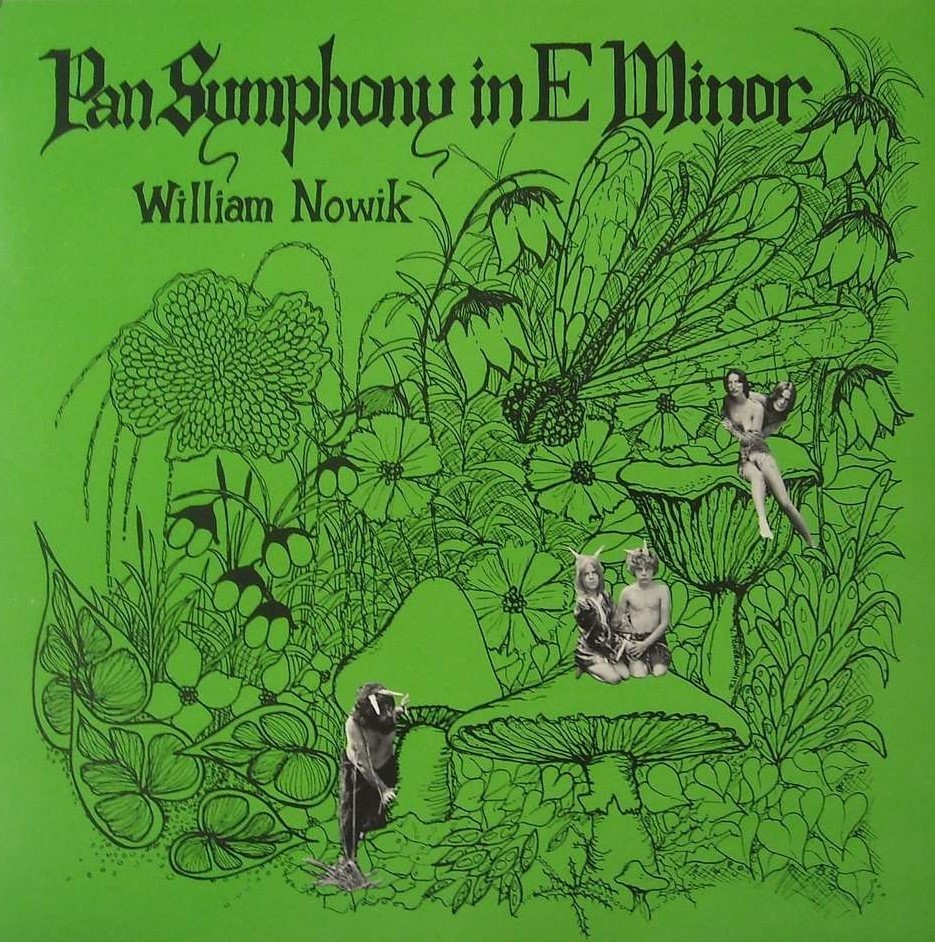
What are some of the strongest memories from producing and releasing LP?
At one point the sax player flipped. Panic attack. He started yelling he was the monkey christ and started to swing a tube Neumann microphone threatening to destroy everything and everybody. After he calmed down a bit, several us were able to escort him out of the studio with no harm to anybody or the gear. Another time, a piano player I had asked to play was so wasted he couldn’t play. When it came apparent he just wasn’t able cut his part, he was asked to leave and told he could come back when he sobered up. He also flipped out and became violent. Along with another one of the friends I had asked to play, they took a large concrete block and threw it through the glass door of the main door to the studio, breaking it into a thousand pieces. They yelled and screamed at me, “Why is it you and not us who gets to make a record?” Sometime during the second night of recording, Tom Mangialino came up with a contract. It was forever. Forever. No matter what I did for the rest of my life he would get a percentage. If I worked at a gas station pumping gas, any job I would ever have, he wanted a piece of it. I couldn’t sign it. He stopped the recording process saying if I didn’t sign it, all bets are off. I told him I’d go to a lawyer and come up with a fair and equitable contract. The recording was put off for a few days while lawyers figured it out. The only thing changed was life span of the deal. Three years. Whatever I did for three years, he’d get a percentage of it. I didn’t mind. I wasn’t making any money anyway and it didn’t look like I would make much in the near future, so the hell with it, against the advice from my lawyer, I signed. I just wanted to get back to making the album.
What gear did you use?
A Martin D-28 my father had bought me in 1964. A Dan Armstrong Plexi-glass guitar. A ’50s Danelectro Leader amp, adding a ’60s Fender bandmaster 2 12 bottom to it. A ’60s Guild Starfire 12-string. An early 70s Guild Bluesbird bass. A violin with a Barcus Berry pickup. An old pump organ. A ceramic blowfish. A flute made from lava in the shape of an angel. Wooden flutes as well as a Gemeinhardt.
How about the cover artwork?
My older sister did both the front cover and insert drawings. A woman friend shot the pictures both in the studio and in a graveyard. I put it all together. It was originally to be all black and white, but Tom got a deal on a color, so he turned the cover green. When Guerssen Records re-released it, they, very kindly I might add, agreed to put it out in the original black and white.
Was it privately released?
This is a mystery to me. All I can remember is Tom took charge of everything at that point. In order for me to have copies, for myself, to give to both friends and other players on it, I had to pay for them. I didn’t think the album was any good anyway, so I forgot about until it was ‘discovered’ a couple years ago.
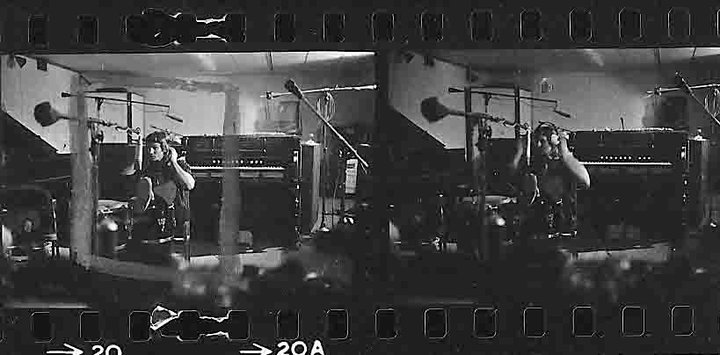
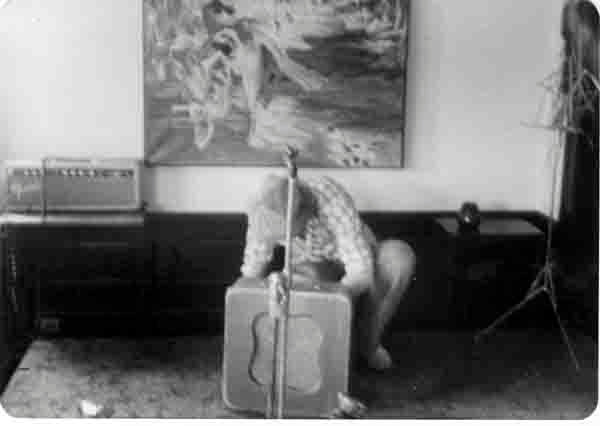
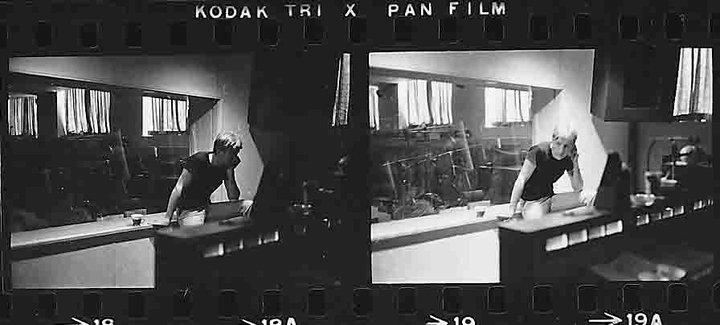
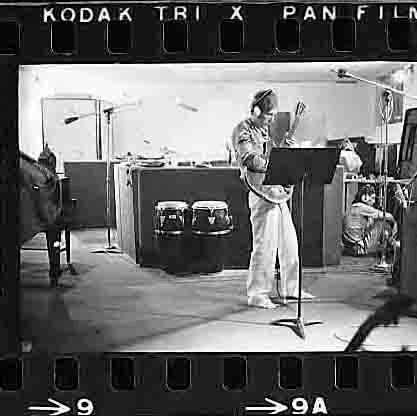
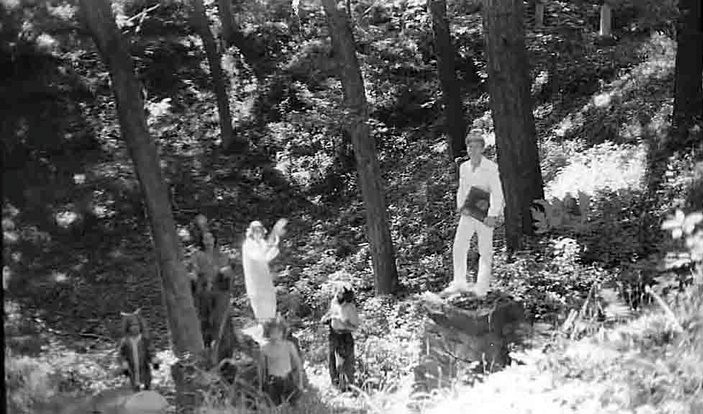
Would you share your insight on the albums’ tracks?
“A Conjuration to Pan”
As I was thinking this album was to be the soundtrack for a movie, I was thinking in images, storyline, dance movements, characters and character development, lighting, style, color, transitions and flow. I left holes in the music thinking they would be filled, to some degree or other, with visuals. I don’t know what this album sounds like to other people because, for me, I was thinking of this record as being intertwined with the imagery of moving pictures. Although I’ve listened to several parts of the Guerssen release, I haven’t heard the whole thing in decades. This piece was to be the opening scene where Pan was being brought back to life by way of magic ritual.
“Flight From Morocco”
This piece was to depict Pan waking from his dream of death in Morocco and flying once more into life.
“Dionysus”
Dionysus is represented by city religions as the protector of those who do not belong to conventional society and thus symbolizes everything which escapes human reason and which can only be attributed to the unforeseeable action of the gods. His festivals were the driving force behind the development of Greek theater. Pan is associated with him. This piece was to depict musically the imagery of what I just mentioned.
“Tales of Joujouka”
In the movie, I was going to depict what I imagined Brian Jones experienced while recording his album in Morocco.
“Conjuration To Pan/Dirigatur”
The Georgian chant, Dirigatur, is a prayer, an offering. This piece was to illustrate that prayer is not the sole property of any religion. And I liked the way in which the monk’s chant and my conjuration sounded together.
“Rolling to Venus Interlude”
Venus, Pan, sex. The angel/beast in all of us.
“Time to Cry”
Comedy/Tragedy – Time for one, time for the other.
“Heaven Help Us All”
Imagery of opening to the mystery.
“Soma”
This was to when a few of the characters are tripping, and was to be very psychedelic.
“Burnt Offering”
A scene where a church was being both torn apart and burnt to the ground while the organist played on. A metaphor for the dominant order who persist in inflicting suffering on the masses even as revolution attempts to tear it down for the benefit of all.
“Pan’s Sleep”
A peaceful, forest scene where many of the characters were resting.
“Sky Fire”
I had taken a break from recording and was outside the studio toking. I looked up at the night sky and it exploded with Northern Lights, an extremely rare occurrence in the western New York town we were in. The cats I was with were sure we had successfully conjured up Pan. When I went back into the studio, this was the piece I did so it had to be tagged “Sky Fire”.
“Pan’s Return to the Mountains”
The metaphor of the mountain.
“Finale – Conjuration to Pan”
Finale: a metaphor to remember.
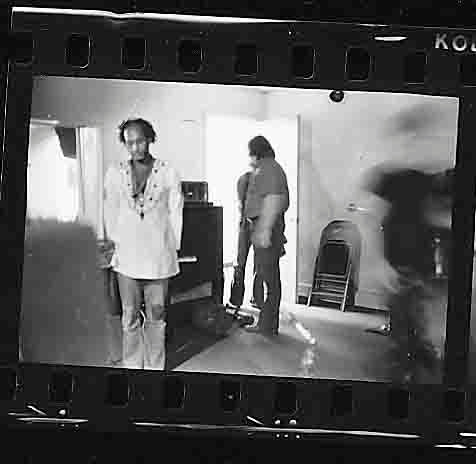
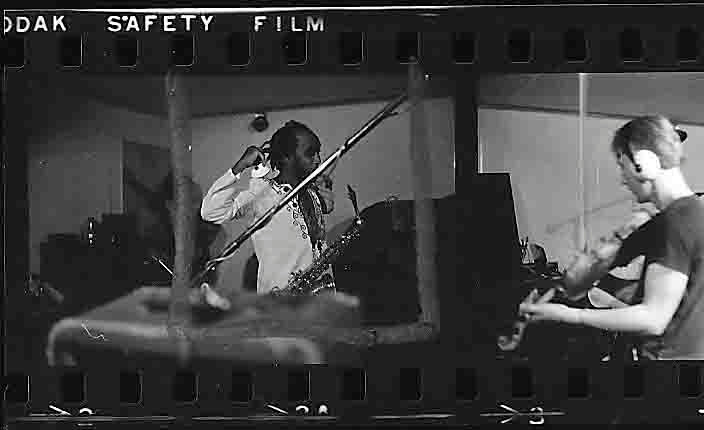
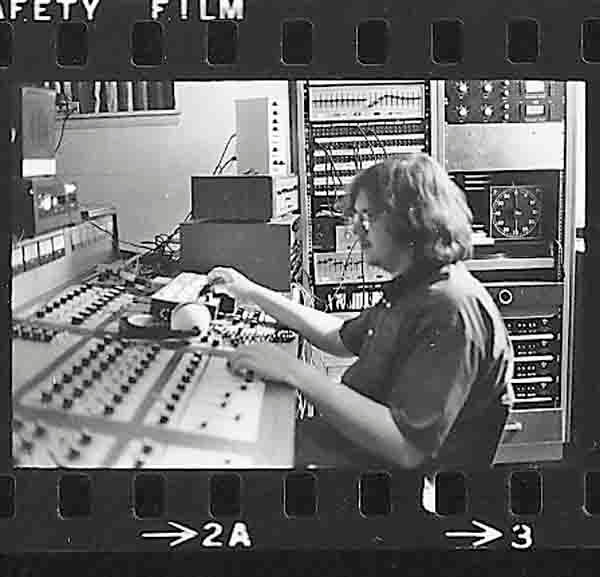
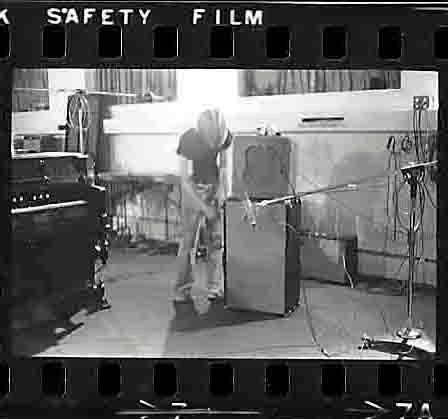
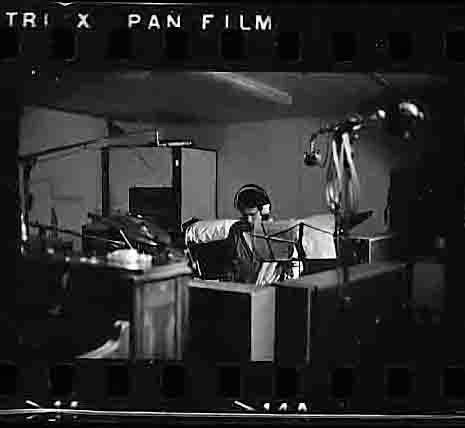
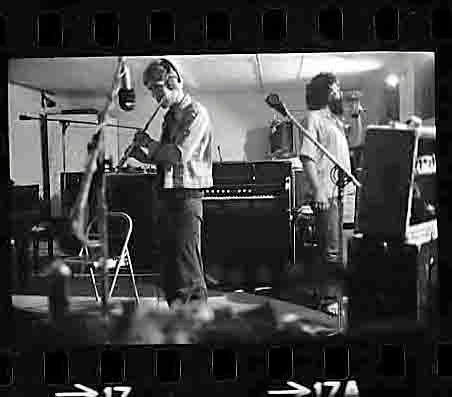
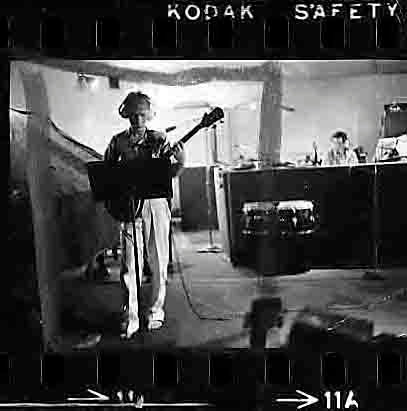
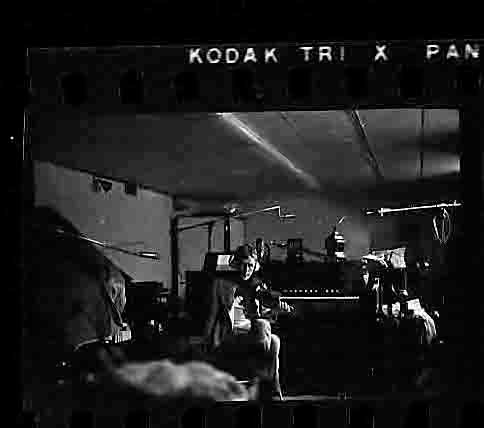

Did you play any shows?
I still play live and will do so until I die, if gigs are offered. The gigs I’ve been doing these last few years have been in mostly underground spaces in Brooklyn, Boston, Greenwich Village, Vietnam, Russia, South Korea, England, Lithuania and Afghanistan. In Kabul, I was artist-in-residence at an underground cafe. Maybe you will invite me to Slovenia to play! Gather some of your friends and lets make an album! And if anybody else who is reading this wants me to play, please contact me and let’s figure it out.
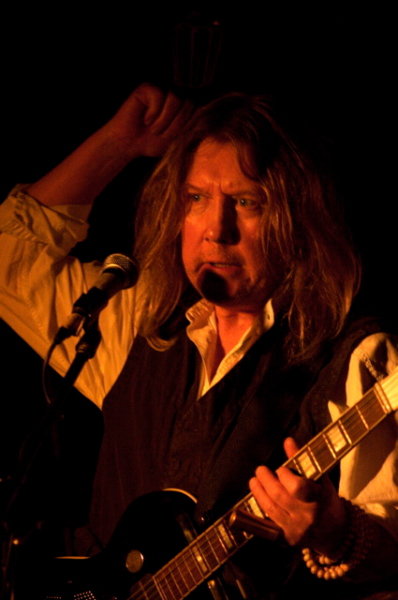
What happened next?
Ah, to answer that I’d have to write another book.
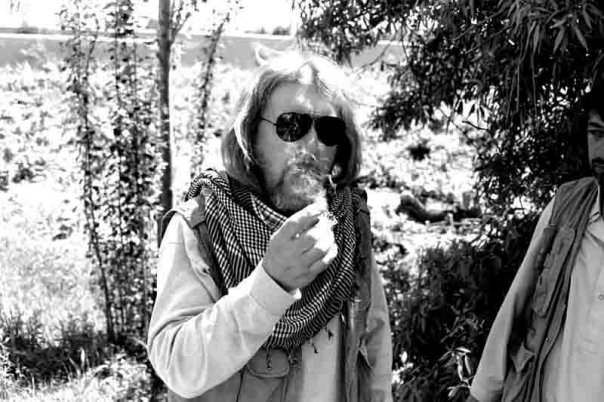
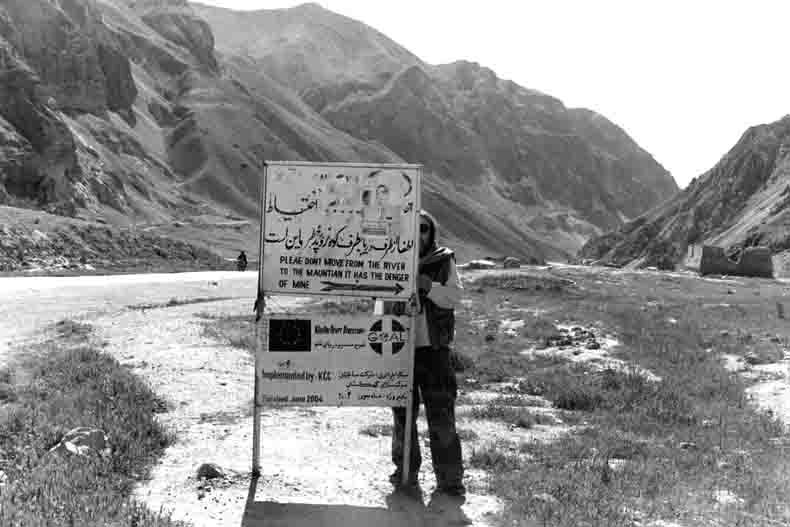
Future plans?
To come to Slovenia to play! Gather some of your friends and make an album!
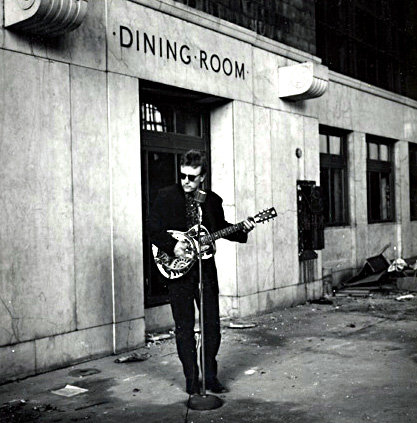
Guerssen recently reissued your album.
I can’t say enough good things about Guerssen. In a business filled with demons, Antoni is an angel. Everything he said he was going to do, he did. Right on.
Thanks again for taking your time. Would you like to add something?
It looks as if Pan is still about. Thank you for your interest in this old work of mine. And kudos to you Klemen, for your work, your time and effort, in both searching for and discovering music and musicians many of us have little or no knowledge of, and then sharing the fruits of your labor. You are accomplishing a great work and it is of value. Thank you, man. And I’d like to say to those of you who read the other interviews to please write something to the people you discover here. It could brighten their life to hear you found something in their work that touched you. I’m sure Klemen would pass on what you write to them. And here’s an idea. As Pan Symphony was to be a soundtrack for a movie never made, maybe one or more of you reading this is a filmmaker, or you want to try your hand at making a film. Why not use Pan Symphony, or a part or parts of it, to make a movie based on what you both hear when you listen to it and read here? And/or why not take a piece of Pan Symphony and make a Youtube video? Or maybe you know a filmmaker and you might pass this along. Or if anybody wants me to record new material, I’d be willing. Feel free to contact me with any of your ideas. My dubious life hangs about me like a tattered battle flag from a war no one cares to remember. All I have left is a few foreign coins janglin’ in one of the pockets of a ripped, frayed and paint stained vest once belonging to Picasso. This is for you, dad, you were, and always will be, my guide. Maybe, after all, Pan is you…
– Klemen Breznikar

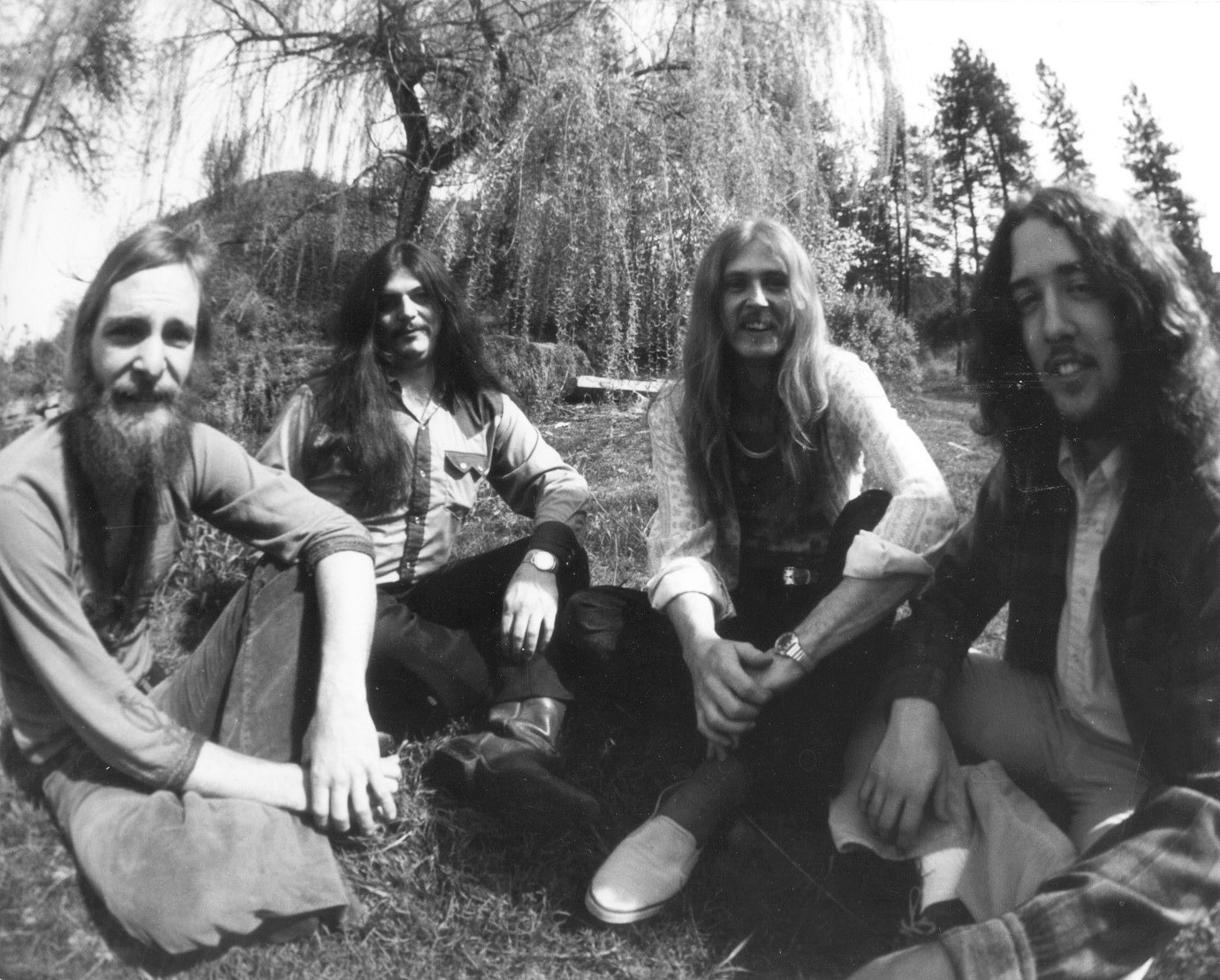
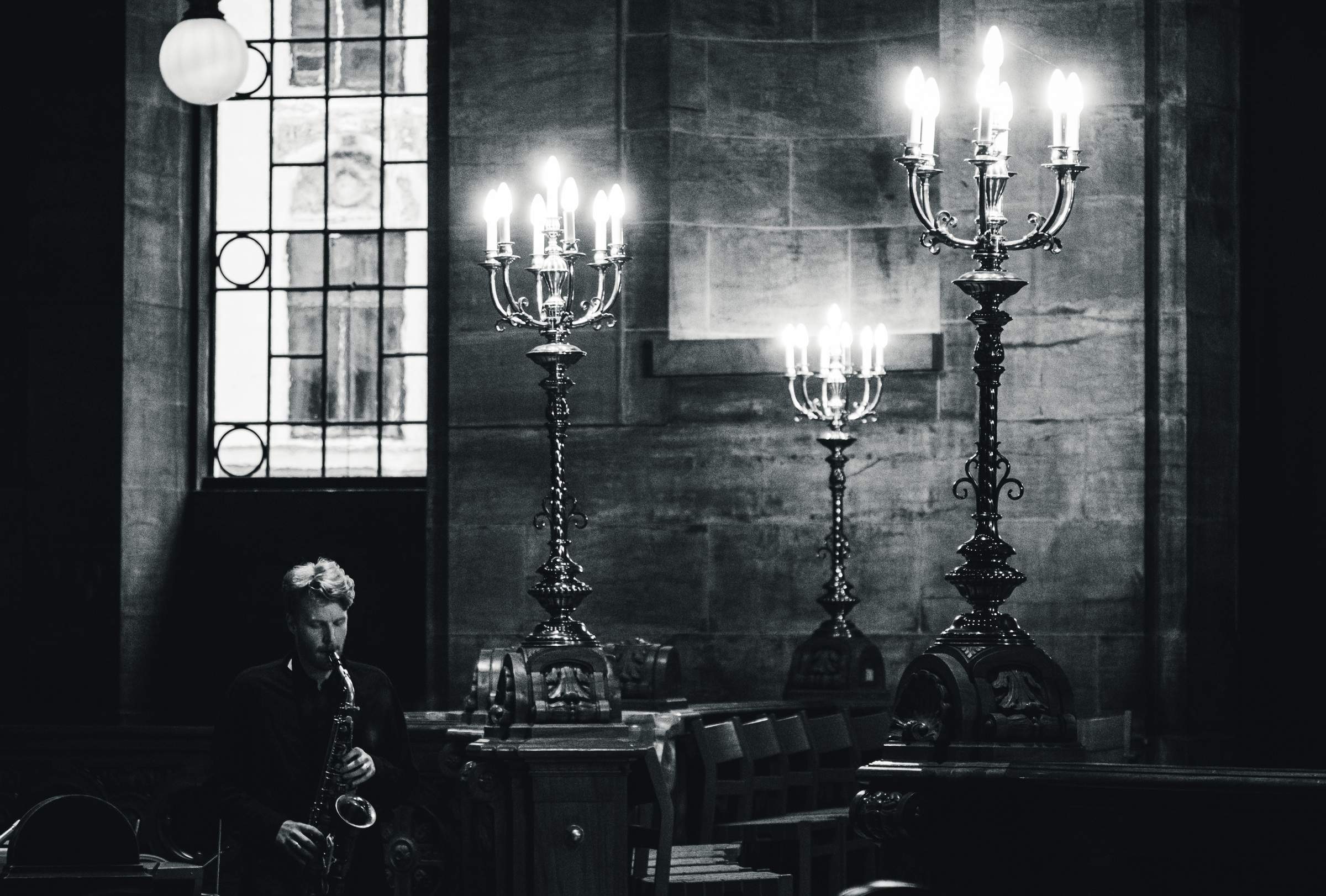
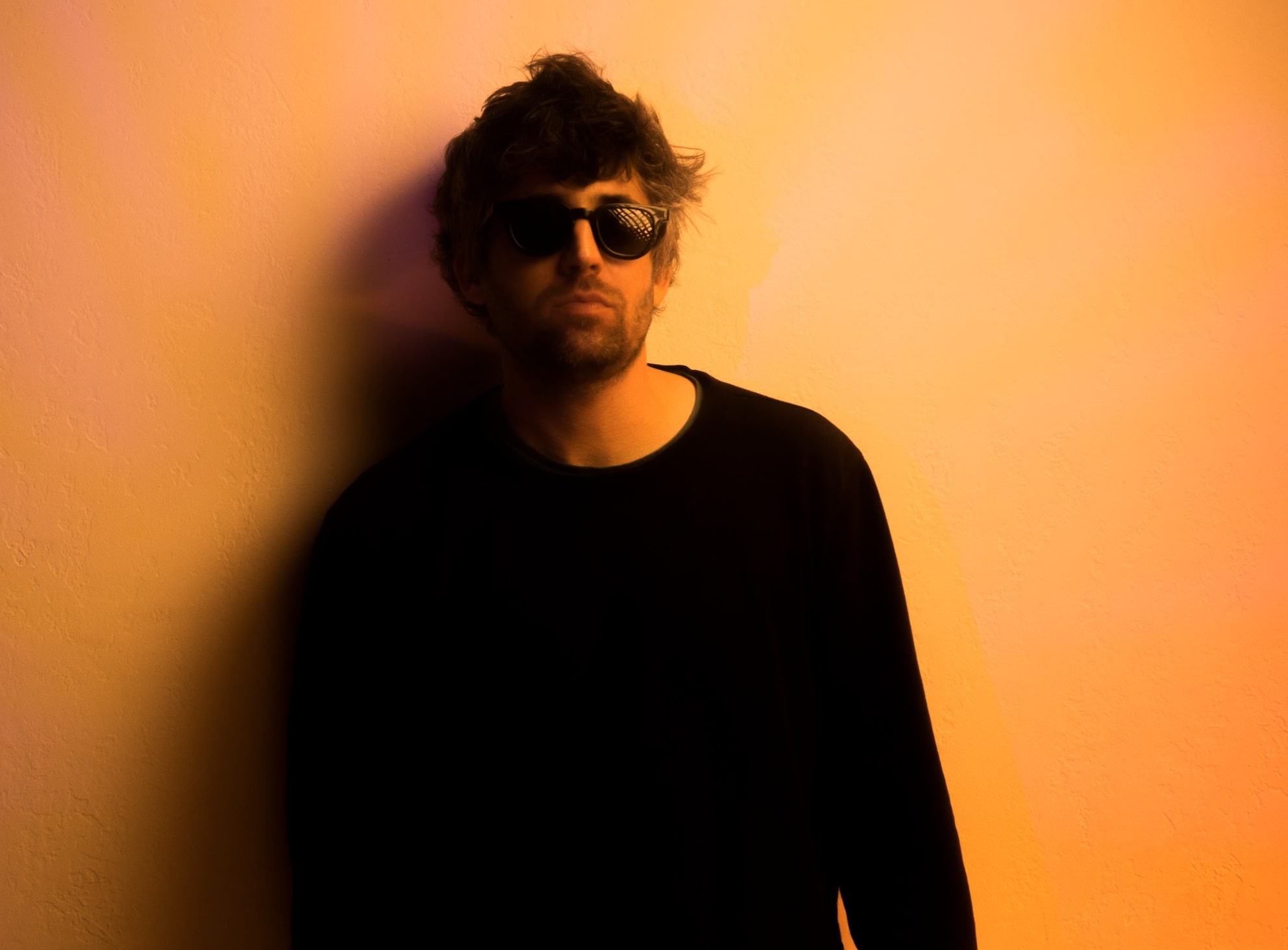
A superb interview laden with all the weight my good friend William has carried through his life. We've been friends for near 40 years now and he continues to amass, amaze and amuse. I will not illuminate further 'cept to call him my brother and verify that all is as William tells…and more. Would that there were more dreamers like my pal. ..and yes, I am one of those lucky ones that he speaks of above. Always worth the hunt for what William is doing.
Thank you for sharing your experiences with your open heart, William. As I was reading this, I visualized a lovely little biographical film of your life thus far…
more like a novel than an interview, definitely scripted…makes a great read…fantasy and reality mix, for those of us who know him from the past! Dreamer…I'd say so that's why I got involved a few times !!! Too bad people never really know the faces beyond the facades.
the so-called manager
nice